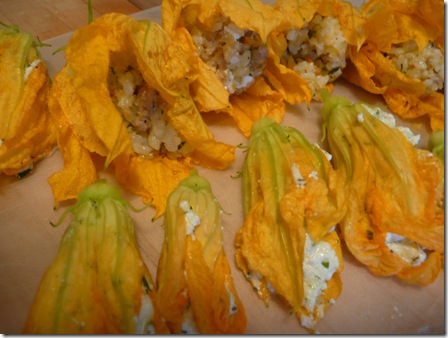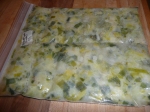Have you ever wondered “What is this? Do I need to use it soon?” when you opened your fridge?
I have… I’ve always had many containers of leftovers, tried to figure out what they were, and more so, how old they were and if we needed to eat them soon or … if it would be better to throw it away.
One of the key secrets of Kitchen Wizardry is storage strategy, in particular, packaging and labeling. Since we have been talking about the kitchen tool box, let’s talk about labeling first.
This guessing game was a huge waste of time. First of all, if the container is not see-through, I had no clue what was inside. Clear containers are definitely helpful, yet very often, they required me to open to confirm what they really were, and often I even had to taste, ending up eating that chopped cilantro I don’t like by mistake, thinking it’s parsley.
Of course the worst thing was figuring out when I made it.
I used to have a great memory, especially when it came to food, yet I can’t quite remember exactly how many days ago I made something, especially since I tend to make so many different things, it gets confusing! I often asked for my husband’s help just like many other things, but he doesn’t cook, so his memory is even more vague.
Once I started doing this Kitchen Wizardry thing, I started to have even more containers and bags (and many raw pre-chopped things) so I couldn’t rely on my fading memory any more.
So, I started to label everything. A long time ago, watching Martha Stewart labeling her linen closet shelves with P-Touch, such as “Bath Towels”, I thought “Oh, my God! It’s too much! I would never do that!”
But now I know Martha knew better. When everything is labeled, it’s much easier to find things… especially in the fridge and freezer. (Now I’ve never seen Martha labeling things in her fridge on her shows or magazines. But it doesn’t mean that she didn’t teach about it… I just don’t have time to watch her shows any longer.)
Since I’m more into practicality and efficiency than perfect aesthetics, all I use is good old masking tape and a water-proof pen. (Sharpie Ultra Fine.) It’s much more clear than a regular pen, yet fine enough to write in small letters, even on very small, 3 oz containers. Masking tape is great. It sticks well to any surface, and can be removed easily. After dinner, I make all the labels for the leftovers, cut them and stick on each container. That’s it. (I use regular scissors, not my kitchen shears for this task.)
Most of the time I just write what it is (recipe name, or how it’s prepared, like “sautéed zucchini with lemon zest” and the date I made it , that’s it. When I make individual size packages of leftover ground meat, rice, etc, then I also add volume. In that case, a label looks like “Steamed brown rice, 5/4/09, 125g. (I grew up in Japan, so metric system is always easier for me… Use whatever easiest for you to figure out the amount, such as 1/2 C, 4 oz, or 1/4 lbs…)
Make sure to face all the labels to the front, so that you know exactly what everything is, and how soon you need to consume them (or if they are past-prime) at a glance.
If you have anything that needs to be used quickly, put it at eye-level or at least where it’s easiest to find. Because it’s out of sight sight, out of mind happens really quickly in the fridge, and actually it should be called “out of sight, out of date.”
You can pretty much use the same labeling system for freezer too. Yet for freezing, there are a few tricks you need to follow to make your life easier, not the other way around… We’ll talk about it on our next post.
I found this system easy to follow and fun – even to an organizationally challenged person like me. And I found we eat what we have on hand, in the right order, helping us spend less time in the kitchen.
Technorati Tags:
kitchen,
tip,
easy,
time saving,
storage,
label,
masking tape,
waterproof pen,
sharpie,
fridge,
refrigerator,
freezer,
Martha Stewart,
memory,
stick,
container,
bag,
amount,
volume,
eye-level,
at a glance,
individual size,
package





